Art Climbs the Walls Estacada’s artists paint the town red…and yellow and purple and…
written and photographed by Catie Joyce-Bulay
You may not notice Estacada’s artists at first glance, in this a sleepy little pass-through town to get to recreation destinations in bordering Mount Hood National Forest. If you stop to stock up in the grocery store, you can’t help but notice a Native American tribe fishing Celilo Falls under the “Fresh Produce” sign. Then look across the street and huge mushrooms rise from the forest floor among apartment doors and a giant forager. On the wall next door, Chinese-Americans harvest ginseng, an important pre-World War I crop for the region. These are the murals of the Artback Artists Cooperative. Twenty-one in all, they are ubiquitous downtown and in surrounding parks, calling visitors to take notice of the rural town of 3,000’s surprisingly vibrant arts scene.
I recently spent a sunny summer morning touring the murals with two of their creators. Walking among them with artists Jenny Joyce and Kolieha Bush, they pointed out weather damage or something they’d change, giving me the history and often naming the people depicted in them. “I think the door should be open on the chapel, don’t you think?” asked Bush while surveying a mural on Second Street. “Kinzy Faire Garden,” designed in 2000 by Am Griswold, who also works in clay, depicts a lush local garden. No longer maintained, its beautiful blooms live on in the mural as part of the town’s history.
“We’re doing this for Estacada, for people in the town,” said Joyce, who was part of the project’s founding and designed and led its first mural in 1994. “ That’s hard for some to understand, but we’ve had real consistent support throughout the years.” Half of the money they raise for murals comes from donations, the other half from grants. Joyce, who, like Bush, works as an artist for McMenamins, moved to Estacada in the 1990s and soon got to know other artists living there. She had worked with children painting murals through Artists in the Schools, and she helped form the artists cooperative to raise money for the city’s first mural.
It was important to her and the other artists that they be compensated for their work. Joyce, who now lives in Portland and grew up with a love of art, has worked as a professional artist for her entire career. “People think art is fun and they shouldn’t have to pay for it,” said Joyce, who shows her oil and canvas landscapes and abstracts in a couple Portland galleries. “ There’s a lot of delusions about life as an artist. It’s important to pay us.” She credits the small stipend the artists receive to the group’s survival over the last twenty-four years. The artists, a core group of ten with new additions each year, named themselves Artback, a play on “outback,” since they initially saw themselves as outliers. The murals have since made a great impact on the former logging and rail town and its residents not only embrace them, but feel a sense of pride over them. The Artback Artists paint their mural the last weekend in July, which used to coincide with an event called Timberfest. The mural painting soon became its own event, and a few years in, someone in town decided the artists should have music to paint to. A band appeared, Bush recalled.
The festivities naturally developed into the Estacada Celebration, a home-grown arts and music festival. The city bought a semi-truck stage and made the festival official in 2000. “ The first year the band was playing kind of for us,” said Bush, a resident of nearby Eagle Creek who works in a variety of media, including papier mâché and bronze and shows her work in downtown’s artist-run Spiral Gallery and at the Oregon Country Fair. She credits the fair’s creative spirit as an influence on her free-spirited art. is year’s mural, one of the co-op’s most intricate designs, depicted the annual summer celebration. The mural, co-led by Bush and calligraphy and watercolorist Nolene Triska, was inspired by a postcard Triska made of the celebration. The first mural, “Fishing the Clackamas,” was completed in a day with house paint. The artists now use better-quality mural paint and a varnish with fixative to preserve the murals from weather and sun damage. The process now takes several days, but the murals should last at least twenty years. Unique to the group is its focus on the restoration of old murals. “A town that’s full of faded murals is really sad,” Joyce said. “As we redo them, I think they’ve gotten better. I’m a better artist now than I was thirty years ago and to bring it back to life is really fun. I love that.”


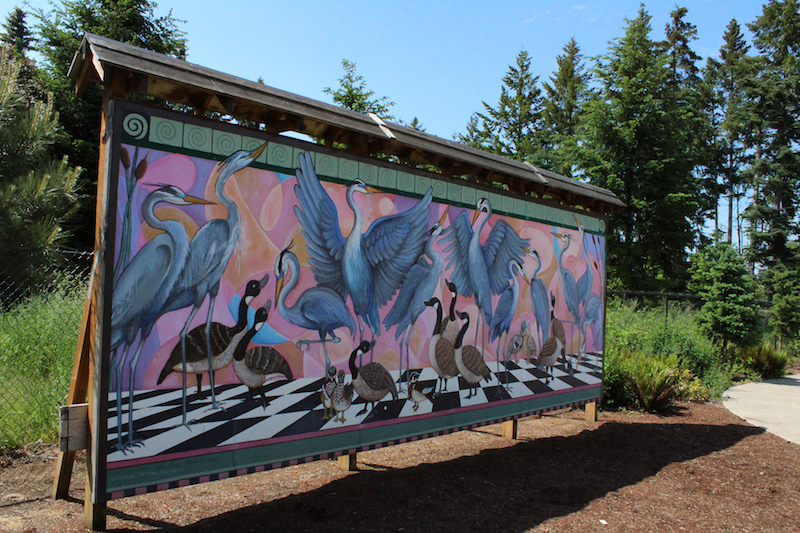

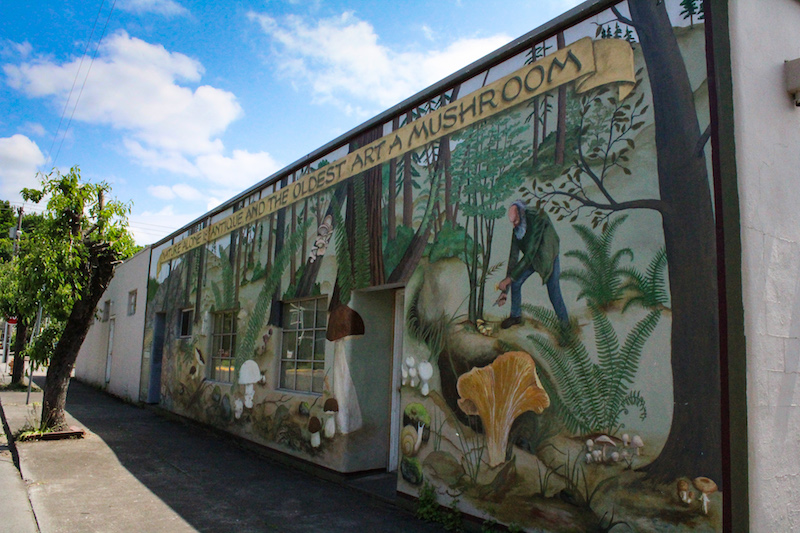
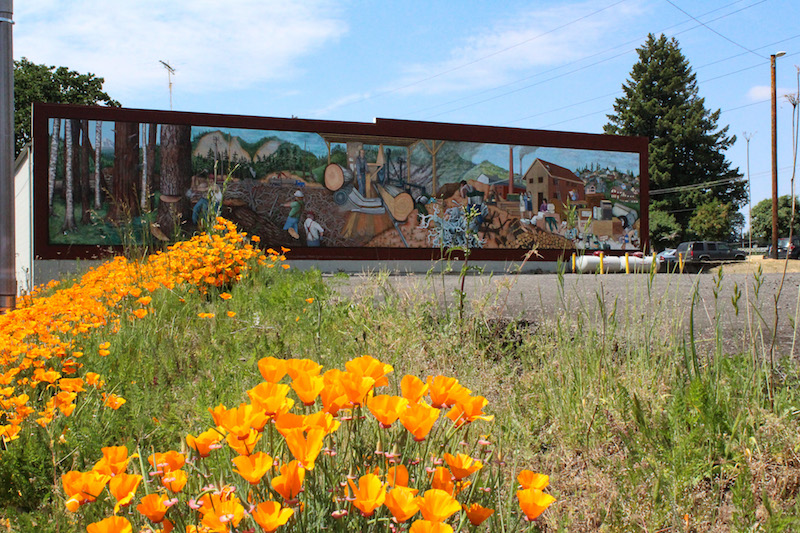
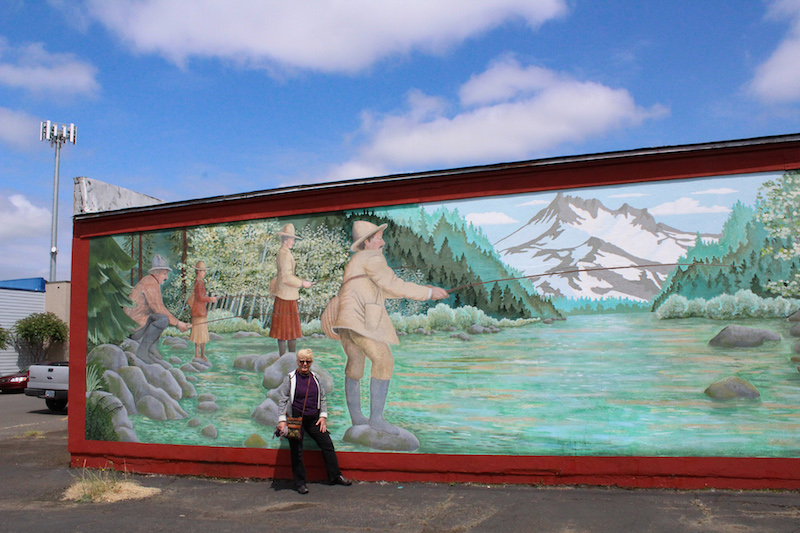
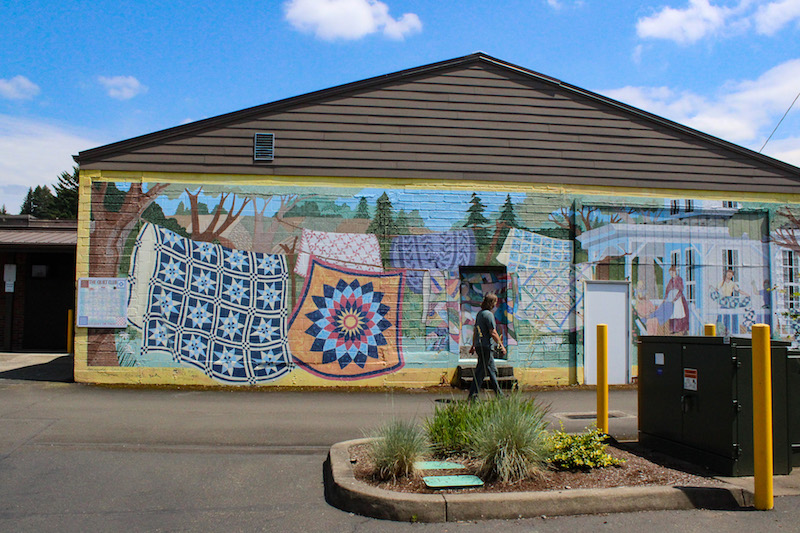
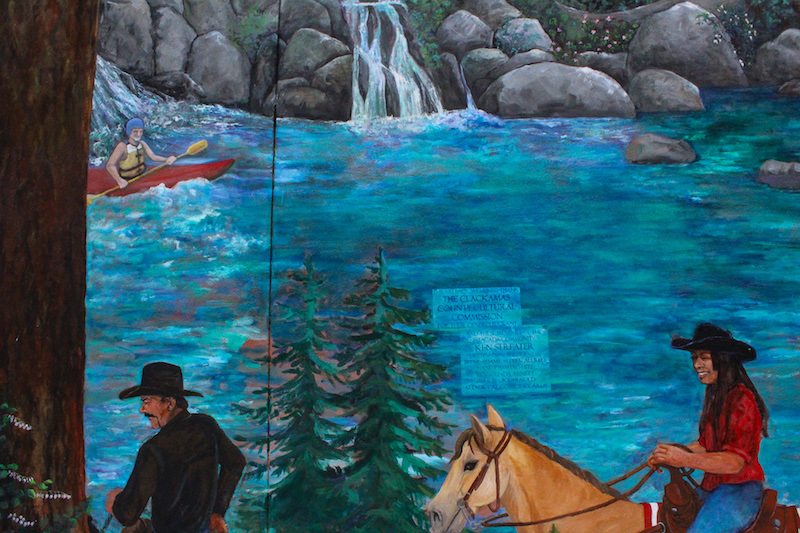
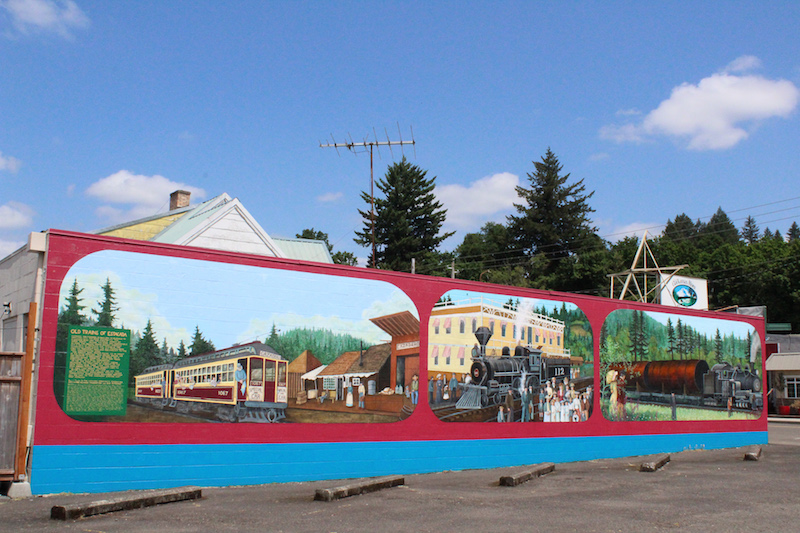
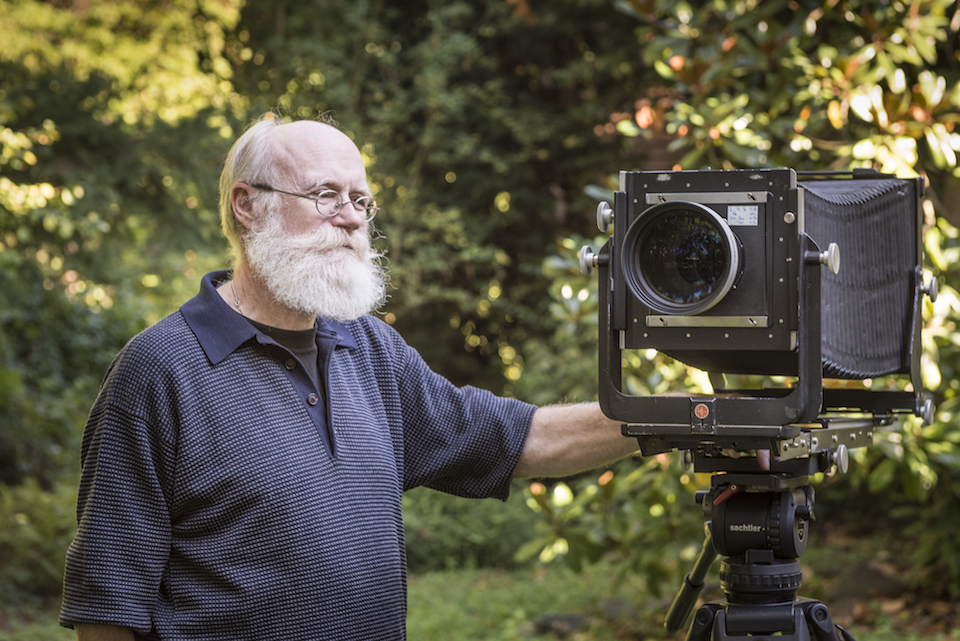

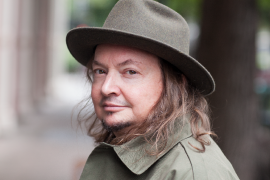
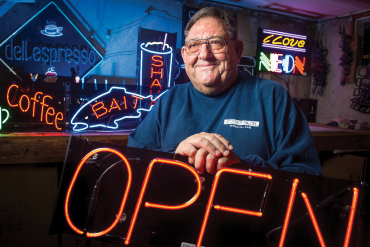



I lived and worked in Estacada for many years and the artists of the area brought beauty to the town and art lessons to our students and and soul to the community. Loved them then and love them still.